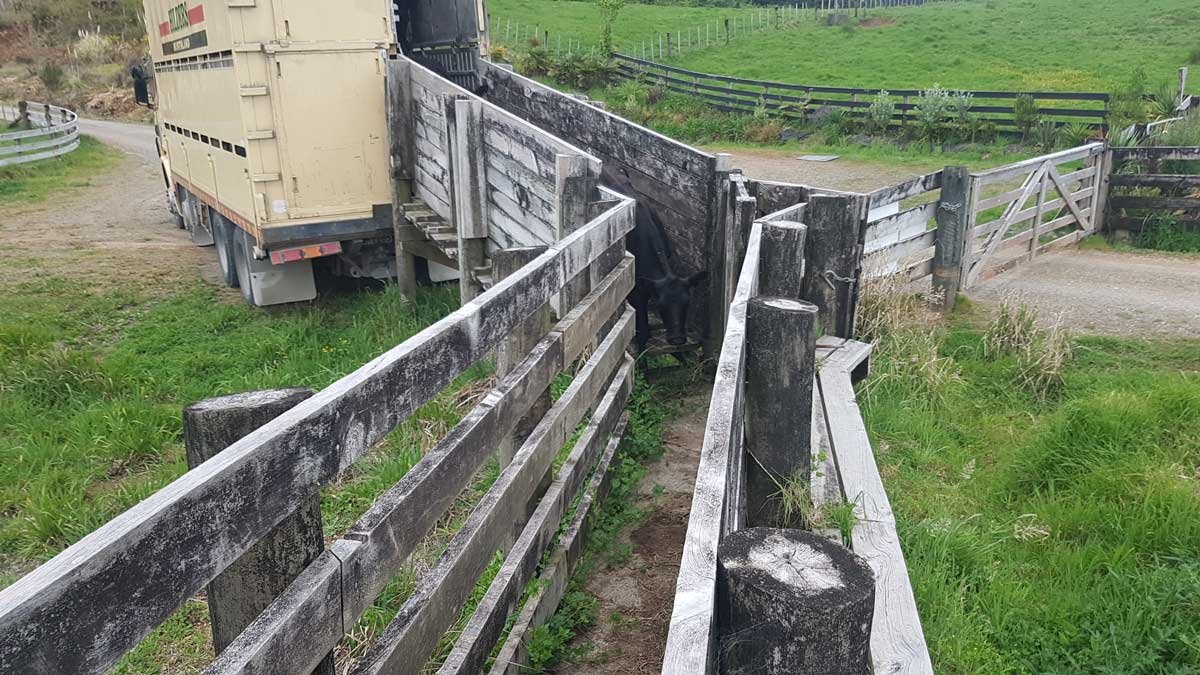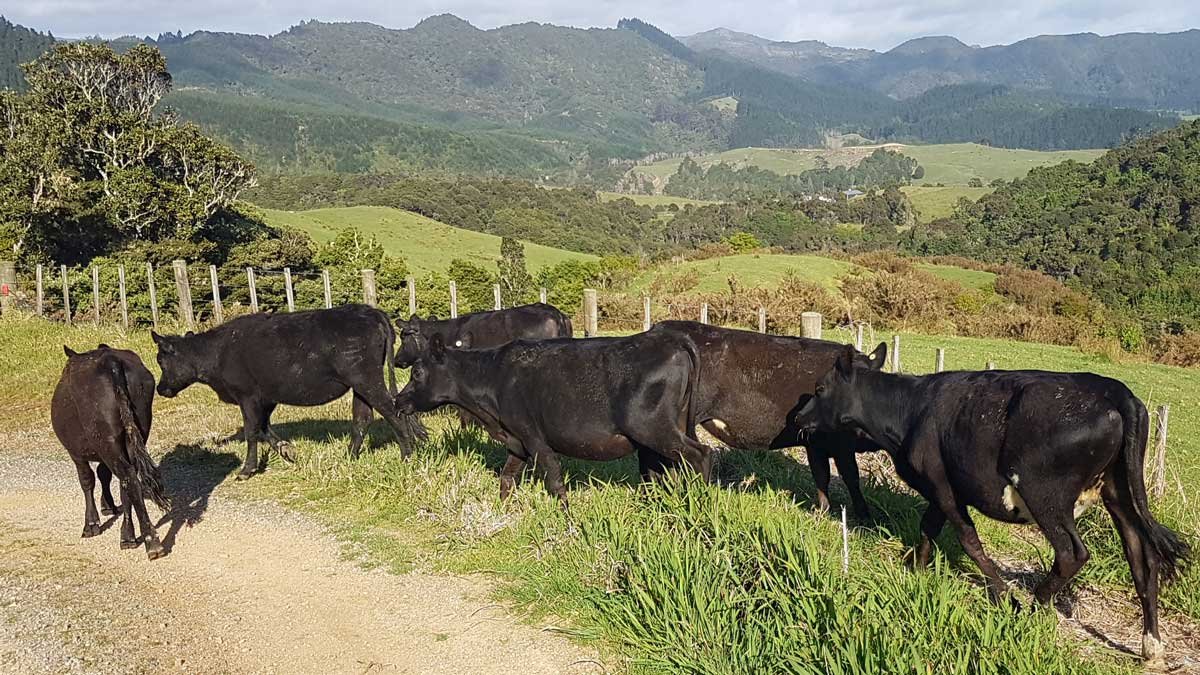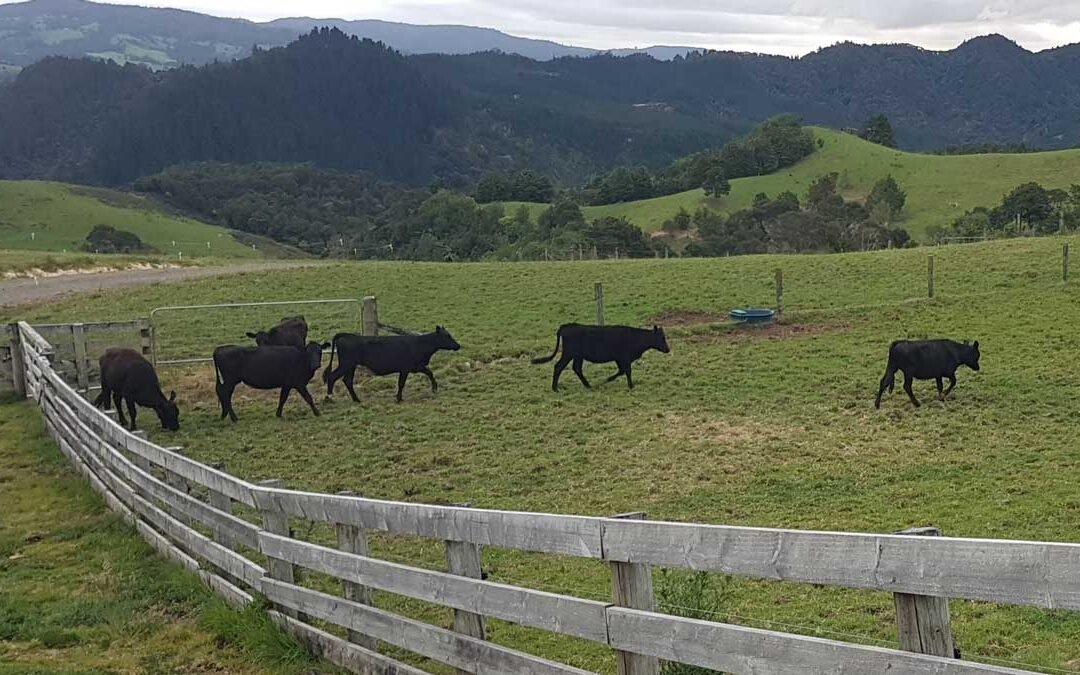About 6 weeks ago, we made a decision and sent our cattle to the works. They were big cows and their impact on our property was increasing. Prices were good, and people much more knowledgeable than us were advising us to sell.
We did pretty well out of that transaction, but our grass hasn’t stopped growing. So this week, we used most of the funds to purchase a new herd.
How to buy a cow
The truth is, I’ve never actually bought or sold cattle before, this is all new to me. The cows we had originally came with the property. I’ve spent many hours over the last year looking at TradeMe ads for cows and struggling with a few things.
The biggest conundrum has been how to get them home. There’s been exactly zero local farmers offering cattle with delivery on TradeMe in the last 12 months. I’ve been scratching my head over this one for a while.
Then there’s the problem of what makes a good cow? How much do you pay for a cow? I’m all very new to this and I honestly started the process knowing very little. What if the farmers see this clueless townie coming for some cattle and sell her the duds?
My research led me to believe I was looking at about $500 per cow. Given this purchase was about as valuable as a secondhand car – except it was live animals – it made me pretty anxious.
It’s one of the reasons I’ve been working away at a Certificate in Land Based Sustainability Practices (Livestock). Being here, I began to realise how much I don’t know, and it’s one of the ways I’ve been filling the gaps. I’ve definitely learned a bunch about how to treat my cattle, but I’ve never found a ‘how to buy a cow’ guide.
Using an agent
Ultimately, we asked the stock agent who sold our last herd to help us buy the new one. An agent basically does everything to find them, buy them, and get them to the property. I’ve read it can be difficult for a lifestyler to get a relationship with a stock agent. Afterall, hundreds if not thousands of cows can be moving on and off the big farms, whereas this year we’ve sold 4, and purchased 6. We’re not the most valuable of accounts.
So I figured our agent might be the best plan for us. It maintains a relationship, puts the decision in the hands of someone who knows what they’re doing, and removes a lot of the question marks.
A couple of weeks ago I contacted him and asked him to find us 6 heifers who would eat our grass, and make a tasty steak at the end of it. I wanted them to be electric-fence trained, and specified a max price of $500+GST each. That’s all he needed to know. It’s safe to say he delivered everything I asked for.
In the blog about selling our cows, I said I wanted 8 new ones, but after 6 weeks of practically no rain, I ended up deciding on 6. We definitely have the grass for 6 even in a bad year, so if the grass doesn’t grow as well as I’d been counting on, no-one will be hungry.
Be ready in 4 hours
On Wednesday afternoon I got a call – the agent had bought me some cows for $486+GST each. They’d be arriving between 5.30 and 6pm that evening. I had less than 4 hours to be ready for them.
After a bit of a rush-about, I was waiting when the truck turned up. Truth is, I had no idea what I’d purchased. I’m kind of trusting that the cow guy knows what he’s doing when he buys cows.
When the door opened, there were 6 rather skinny angus-cross heifers waiting to come out.

Settling in
For the first night, I left them in the neighbour’s paddock next to our stockyards with a big pile of grass I’d cut off our place. They’d come from an auction, which meant they’d had a big day, and a bit of time to calm down would be helpful. It’s a good kilometer from the communal stockyards to our property, so I didn’t want to make their day any harder.
But early the next morning, I checked the paddock, left them a mineral salt block, opened gates, and set tape to guide them home. A neighbour and I walked them down the driveway to our place.

They were the easiest cows I’ve ever moved. They just followed the driveway, eating the grass as they went, until they got to the paddock. Nice and easy.
Who are you?
Once they were safely inside the paddock, I came back to find out what I had. The agent had updated the NAIT system (our national livestock-tracking tool), and I could get some more information about them.
I found out these girls were born in May 2019 in Miranda. They were 15 months old – meaning they had about a year before they would be ‘ready’. This was a bit of a surprise to me – I had expected younger.
Up until Wednesday morning, they lived on a dairy farm in Kaeo. They were either at the lower end of the hierarchy, or just deemed not suitable for calving I guess. I would say they don’t have the condition to breed. They are pretty bony, and that indicates to me that they haven’t had the same kind of access to food they will now.
Value for money
Given their age, the agent had got them at a really good price. All that time on TradeMe told me that in a good year, I’d be looking at about $500 for a weaner (6-ish month old cow who eats grass). Beef cattle in New Zealand are typically considered ‘finished’ at around 2 years old. At 15 months, they would normally be worth significantly more.
But this does not seem to be a good year. Last summer, we had drought which impacted grass growth. Then farmers found it difficult to ‘destock’ (send them to the works) during COVID lockdown. We’re now sitting in spring with extremely low rainfall levels. Farmers are trying to lower stock levels, and I believe there are fewer buyers.
It’s now worked in our favour twice. Firstly, setting a good price for our last herd, and then getting these ones for what we did. We should be able to turn them around and make a tidy little profit in 12 months. Maybe even enough to cover the rates!
Care and handling
Our trusty farmer-neighbour has offered to drench them for us. Drenching now means they’ll empty out any worms and parasites. Without it, they may struggle to put on weight, no matter how much of our grass they eat.
In an ideal world, I would have drenched when they arrived. But drench is typically sold for large herds and literally costs thousands for a container. And I didn’t really get much notice to arrange it. So my neighbour’s offer is very welcome. It’s an opportunity for me to put some theory I’ve been learning into practice, so I’m hoping to give it a go myself under supervision.
Temporary stop
Much like our last cows, these ones have names: Nacho, Taco, Burrito, Goulash, Meatball, and Meatloaf. These cows will end up on a plate, and I name them after beef dishes to remind us all of that.
If these cows lived here forever it would do some pretty major damage to our soils in winter when they got heavy enough. That, in turn, does damage to our fresh and salt water ecosystems.
They’re here as a vital part of our system. They keep the grass and weeds down, they cycle nutrients, and their manure forms a vital part of my gardening and composting process. Until I manage to plant a lot more trees, we’ve got no choice but to have a few cows, but their stay here is only temporary.
I hope they really enjoy the next year of their lives. I want all my animals to be happy here. But this is a cycle, and we’re beginning it again.



I loved reading this! It was fascinating, thanks for sharing your experience.